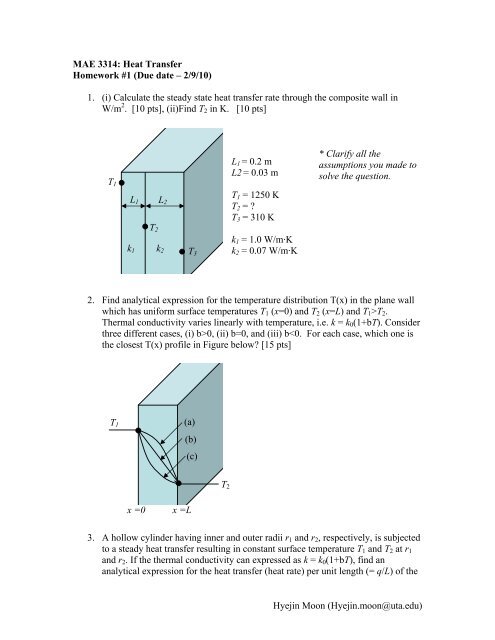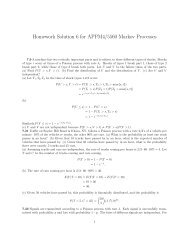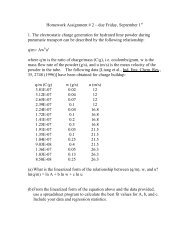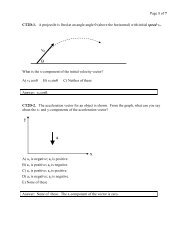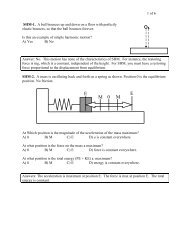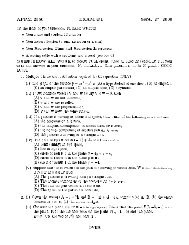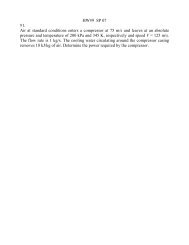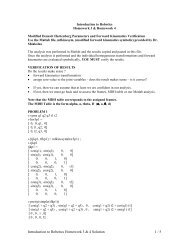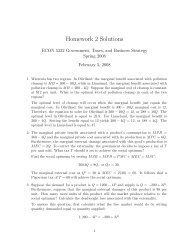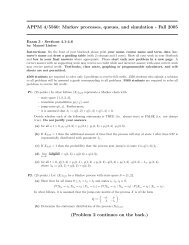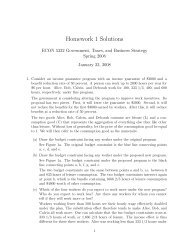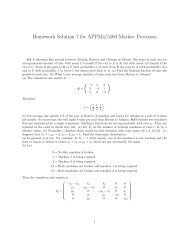MAE-Heat Transfer-3314-homeworkHW1-spr10.pdf - cribME!
MAE-Heat Transfer-3314-homeworkHW1-spr10.pdf - cribME!
MAE-Heat Transfer-3314-homeworkHW1-spr10.pdf - cribME!
You also want an ePaper? Increase the reach of your titles
YUMPU automatically turns print PDFs into web optimized ePapers that Google loves.
x =0<strong>MAE</strong> <strong>3314</strong>: <strong>Heat</strong> <strong>Transfer</strong>Homework #1 (Due date – 2/9/10)1. (i) Calculate the steady state heat transfer rate through the composite wall inW/m 2 . [10 pts], (ii)Find T 2 in K. [10 pts]L 1k 1L 22k 2L 1 = 0.2 mL2 = 0.03 mT 1 = 1250 KT 2 = ?T 3 = 310 Kk 1 = 1.0 W/m·Kk 2 = 0.07 W/m·KT* Clarify all theassumptions you made tosolve the question.2. Find analytical expression for the temperature distribution T(x) in the plane wallwhich has uniform surface temperatures T 1 (x=0) and T 2 (x=L) and T 1 >T 2 .Thermal conductivity varies linearly with temperature, i.e. k = k 0 (1+bT). Considerthree different cases, (i) b>0, (ii) b=0, and (iii) b
cylinder. [15 pts]4. Find the temperature profile, T(r) within solid sphere which generates heat ( q& >0)by solving heat equation. The radius of sphere is r o and the surface temperature ofthe sphere is T s . [20 pts] - Use spherical coordination.dT- Two boundary conditions: at r = 0 (center), = 0 (no heat transfer)drat r = r o , T = T s* Show your own step-by-step derivation. Final answer can be found in thetextbook, Appendix C, Table C.3 (p.970).5. A composite cylindrical wall is composed of two materials of thermalconductivity k A and k B , which are separated by a very thin, electric resistanceheater for which interfacial contact resistances are negligible. [25 pts]Liquid pumped through the tube is at a temperature T ∞,i and provides a convectioncoefficient h i at the inner surface of the composite. The outer surface is exposed toambient air, which is at T ∞,o and provides a convection coefficient of h o . Understeady state conditions, a uniform heat flux of q˝h is dissipated by the heater.(a) Sketch the equivalent thermal circuit of the system and express all resistancesin terms of relevant variables.(b) Obtain an expression that may be used to determine the heater temperature T h .(c) Obtain an expression for the ratio of heat flows (heat rate per unit tube length,q΄) to the outer and inner fluids ( = q΄o/ q΄i). How might the variables of theproblem be adjusted to minimize this ratio?6. A thin-walled copper tube having an outside metal radius r = 0.008 m carriessteam at 383 K. It is inside a room where the surrounding air temperature is 298 K.It is insulated with 85 % magnesia insulation having an approximate thermalconductivity of 0.071 W/m-K. What is the critical insulation thickness at whichthe heat flow per unit length of tube is maximum? External air convectivecoefficient h = 4.0 W/m 2 -K. [15 pts]Hyejin Moon (Hyejin.moon@uta.edu)


